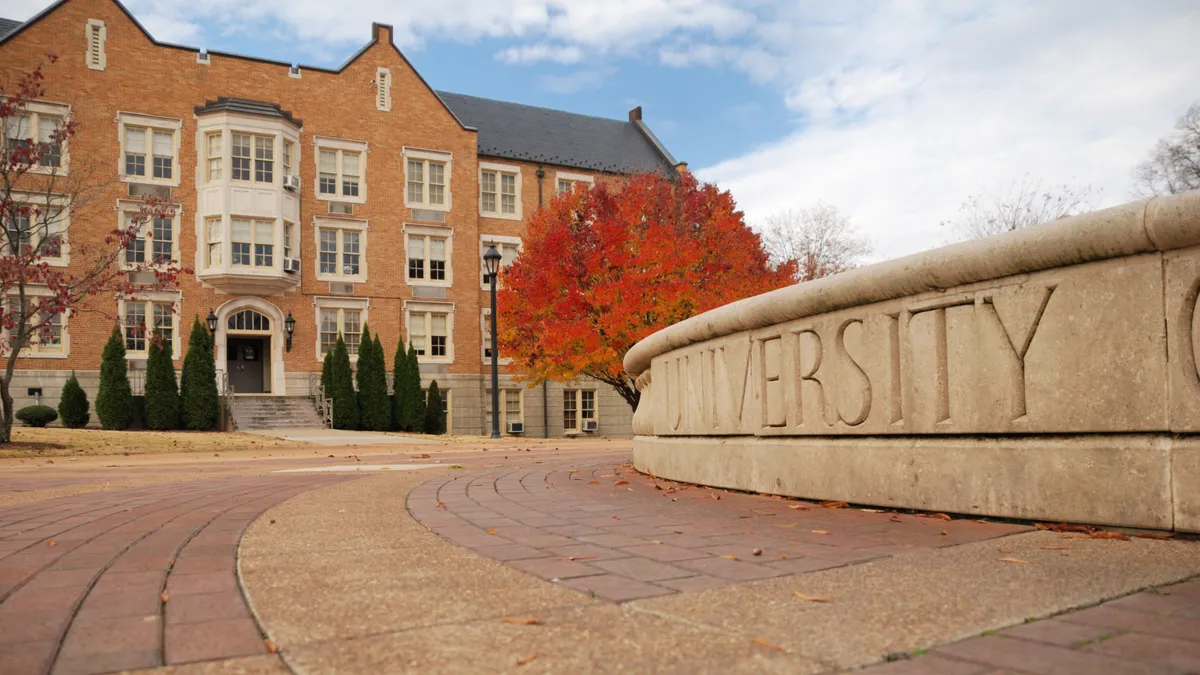Editor's note: Marie Cini is the president of the Council for Adult and Experiential Learning.
About three in four undergraduate college students are what policy experts refer to as "nontraditional" learners. These are students who attend college later in life, go to school part-time, work full-time while enrolled or are raising children while earning a degree.
But from the perspective of university leaders and policymakers, these students are all too often thought of as "others," as a group of learners existing outside the norm.
Of course, the reality is that nontraditional learners are everywhere.
Your Lyft driver, your restaurant server, your coworker in the next cubicle over: They may all be working toward a degree, certificate or another type of credential. And we have a lot to learn from them.
They can teach all of us about the importance, and the increasing necessity, of evolving our education-to-career pathways. Here are three things we can — and must — learn from so-called nontraditional students:
The era of one-and-done learning is over
The shelf life of skills is shrinking and technology is transforming nearly every facet of our labor market. It is a paradigm that many more of us should, and may soon have to, embrace.
The degrees we earn in the years after high school may no longer equip us for economic relevance and employment over the course of a career. And the skills we have today are not necessarily the skills we will need tomorrow.
According to a 2016 survey from the Pew Research Center, workers are already feeling the pressure to become continuous learners. Nearly 90% now believe it is important or even essential for them to receive training and develop new skills throughout their careers if they are to stay relevant in the workplace. And the need for more nontraditional learners will only grow as automation and artificial intelligence continue to transform the future of work.
Researchers from the University of Oxford estimate nearly 50% of employees in the U.S. are at risk of being replaced or significantly impacted by automation in the next decade or two. This new paradigm requires a society of continuous learners.
Learning and earning is no longer an either/or
Aspiring students no longer have to choose between going back to school and earning a living. New online tools and evolving attitudes among employers and employees have made learning while working more feasible than ever.
Today, 70% to 80% of undergraduates are working while enrolled in college. It's a phenomenon enabled by the fact that one-third of all students take at least one course online and 15% are fully enrolled online.
The rise of innovative short-term programs like coding boot camps is, likewise, allowing employees to obtain valuable new skills quickly. That's allowing busy workers — like a single mom raising children while working — to move from a low-paying job in customer support to a fulfilling career in a technology field.
Institutions and employers need to think differently
Despite their growing numbers, part-time learners often struggle to earn a degree or credential. Just one in five part-time students finishes a degree in six years.
These students are not receiving the support they need to succeed as learners. Until 2017, part-time students did not even count toward federal outcomes measures. Institutions must work to better support part-time students and other adult learners.
Rather than urge part-time students to enroll on a more full-time basis, research shows colleges should encourage them to enroll in one more course each semester above what they are already taking to improve persistence.
Institutions should develop shorter-length courses and more flexible delivery formats so adults can better fit learning into an already busy life. And, importantly, they should provide students with specific academic supports designed and targeted for adults who are largely unfamiliar with the ins and outs of the idiosyncratic university environment, and who are juggling many responsibilities with their academic goals.
Employees, too, should work to support and encourage nontraditional learners, either by offering their own training and education programs or by helping workers through tuition reimbursement and other financial assistance. Research shows employers who invest in workplace training and education tend to see a strong return. A 2016 analysis by the Lumina Foundation and Accenture of Discover Financial Services found the company earned $1.44 in savings for every dollar it spent on employee education reimbursement.
Three years ago, then U.S. Under Secretary of Education Ted Mitchell pointed out that nontraditional students had become the "new normal." And yet our institutions and policies remain tethered to a pop-culture archetype that is no longer based on the reality of today's students.
We must adapt our education systems to better accommodate and serve adult learners. And we should be asking how we can grow their numbers.
As the future of work continues to evolve, the new normal will require all of us to embrace a life of continuous learning.




















